


It goes without saying that the importance of organic and non-incentivized downloads should be recognized. General app store browsing is the most common way apps are discovered, up to 53% actually. With that said, you are up against over 1.5 million apps in both the Apple App Store and the Google Play Store.
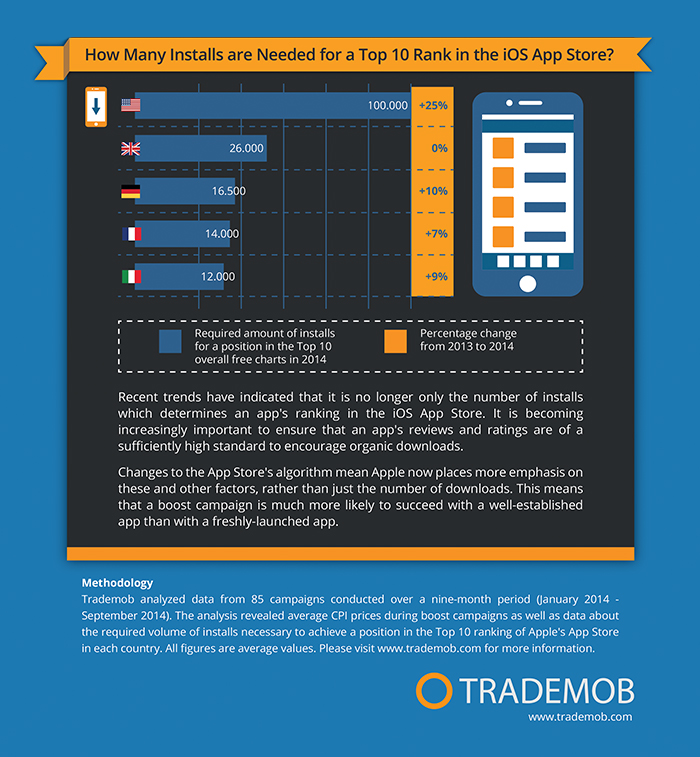
As shown above, 100,000 downloads are needed to break into the top 10 overall apps in the US, and with average CPI of $3.30 USD in the region, this campaign will set you back around $330,000 (USD).
How can I compete with brands and developers that have hundreds of thousands in advertising budget?
App store optimization (ASO) is your best bet to gain low-cost app exposure, resulting in boosted app downloads, a higher number of quality users, and increased revenue. To explain briefly and concisely: ASO is the process of increasing the visibility of a mobile app in an app store through various tactics.
Let’s start by highlighting some of the core components of App Store Optimization in general:
Due to the difference in search algorithms, it’s necessary to have a separate look at the two main app stores, so this two-part guide is separated into the following sections:
The Apple App Store has an easy-to-predict algorithm that is based primarily on downloads. However, other factors are involved too, so our guidelines regarding Apple Store Optimization will focus on the following components:
This is arguably the most important aspect of ASO. It is essential to understand the difference between targeted search queries and keywords. Keyword research, like in SEO, should take a significant amount of time. Start with brainstorming relevant and rising-in-interest search queries with next to no competition.
Make use of the Google Keyword Planner and Google Trends in the beginning to get a general idea of the keyword. Once you get the hang of it, move on to SensorTower or AppAnnie. These tools help with keyword suggestions, tracking, as well as competitor analysis (or spying).
Always remember: you are looking for the highest search volume with the lowest competition.
The App Store gives you 100 characters to list your keywords, here are some quick tips:
Keywords in the app name have the biggest impact on app store search rankings. MobileDevHQ sampled keywords and looked up the top 25 ranking apps and calculated the weight of keywords on rankings.
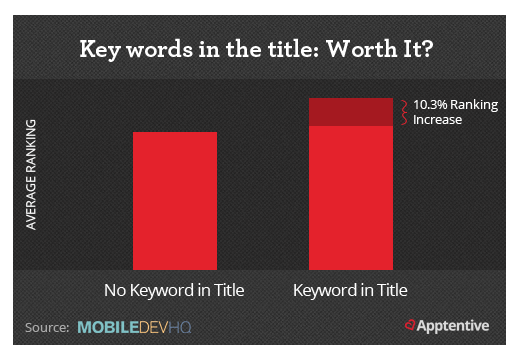
The 10.3% increase in rankings is significant and proves that there should be a focus on this. Here are some other things to note:
These names do not have a great impact on rankings but should not be overlooked. Publisher names can be searched in combination with your app name or keyword, but having a publisher name that matches a keyword isn’t a good idea. Category names like ‘free’ and ‘games’ for free apps and gaming apps respectively are already used, so don’t repeat them. Recent updates changed in-app purchase names to only have an effect if it is an exact match with keywords.
The description found in the Apple Store is not indexed in search but it is a good way to sell your app. It should go without saying that an engaging description will result in more installs than a boring one. Here are some things to note:
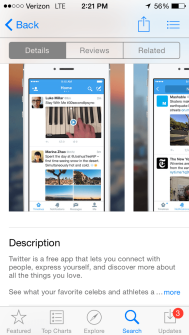
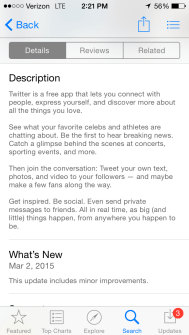
Localizing your keywords for different locations is proven to boost downloads by 767%. This may seem like common sense but many companies overlook this. This method is useful for keyword ranking as well as user experience.

Visuals do not directly affect the ranking algorithms but they do play a major factor in branding and giving them an idea of your app. This is crucial, you want something that draws users in and stops them from scrolling past your app while browsing the app store.
Your icon should stand out as well as represent what the app is. When exploring different options in the app store, your icon is your first and sometimes only impression. It is also a good idea to make the icon design consistent throughout the app as well as with your website.
Besides the icon, the first two screenshots are most important, as they are the ones displayed in search results. Don’t just use the screenshots as a place to place some pretty images. Describe the best features of the app and consider using words to describe what is happening in the images. Treat these as advertisements and if possible, tell a story.
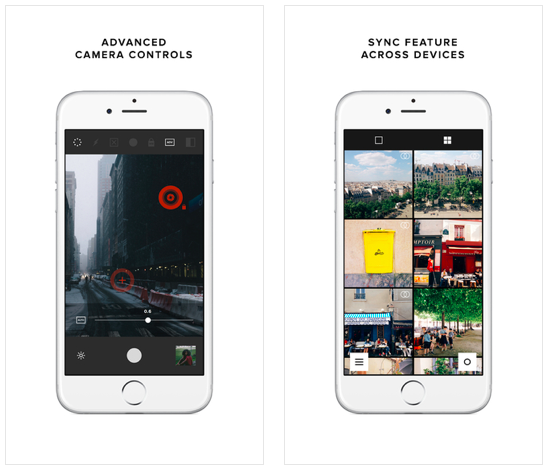
The good news: there are further important factors that can increase the visibility of a mobile app in an app store. The bad news: you can not control them directly. The so called off-site factors can only be controlled through external promotional sources.
In short, yes, and it has a large effect on ranking. The graph below was based on number of ratings since only developers and the App Store know the exact number of downloads. The data from the graph is based on the assumption that the number of ratings is correlated to number of downloads. Note the amount of downloads required for competitive niches as opposed to niches with less competition.
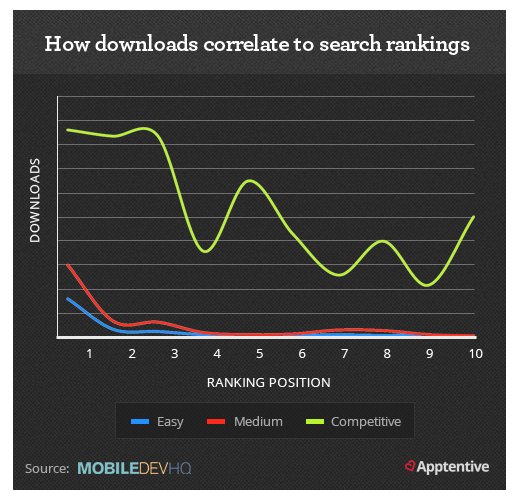
In order to achieve a top 10 rank in the Apple App Store, an app will need to have a large amount of downloads in a timeframe of 72 hours (with the biggest impact from the first 24 hours). There are several factors which will help achieve the desired amount of downloads. Reviews and ratings, social media and press presence all contribute to this. However if you are looking at an entry into a highly competitive niche (such as gaming), buying downloads will be your best bet.
Why are these important? Well, as shown above, there IS a relationship between ratings and rankings, and also users will not install an app with a low rating, fearing a poor experience. With this said, asking for ratings and/or reviews is a double-edged sword, you want the review, but not bad ones. Here are some simple guidelines to follow to receive positive feedback and ratings:
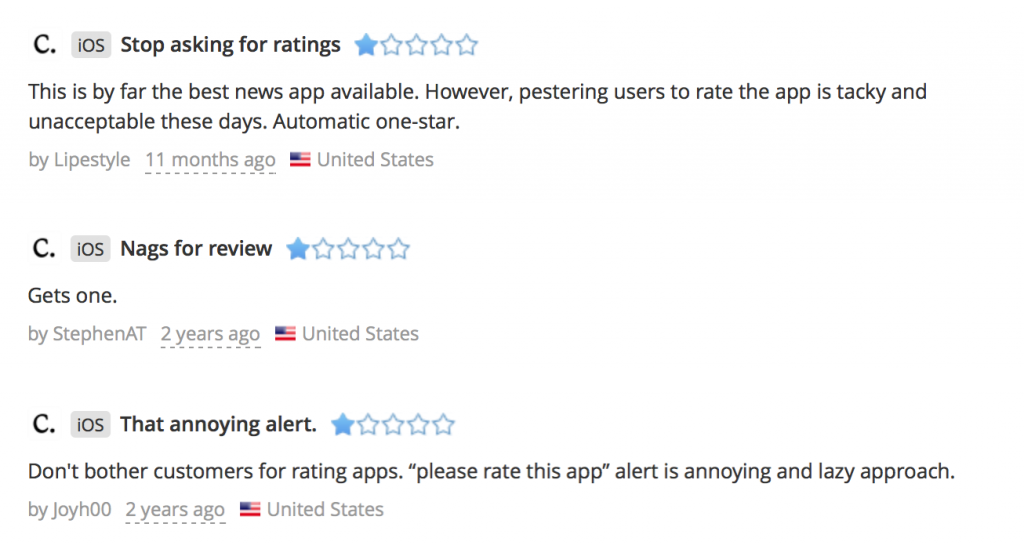
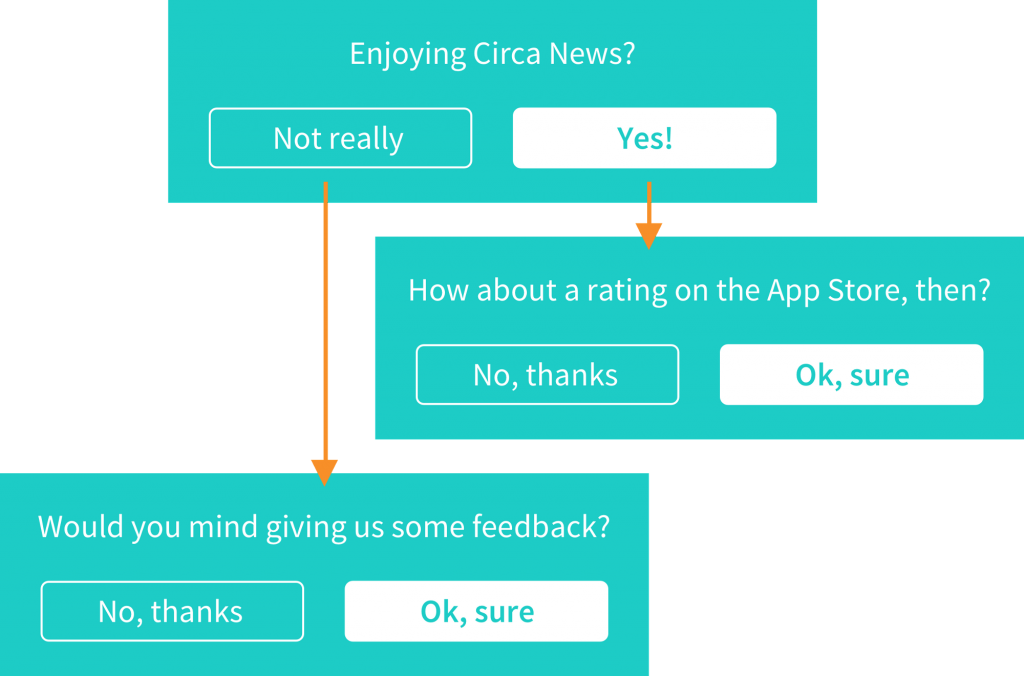
After successfully doing everything mentioned above, App Store optimization doesn’t stop there. You’re just getting started, but the rewards speak for themselves! You have already put your app in a position where it can be organically discovered, but ASO is a continual process. Keep track of your rankings for certain keywords, and make use of the tools now in your arsenal (Google Trends, Keywords, Sensor Tower etc.). Now is the time to test which keywords work and which don’t (remember to exclude blacklisted keywords). Do some competitor research, check what they are ranking for and try to recreate it. To be honest, it is a tiring process, but it’s worth it – and with our guide, it’s easily done!
Now that you’ve learnt all there is to ASO for the Apple App Store, you’re half way there!
Sign in to read this article & enjoy the following:

Palo Alto, United States
Full Time
USD 150000 — USD 200000 yearly

San Francisco, United States
Full Time
USD 50000 — USD 200000 yearly

Seattle, WA, United States
Full Time
USD 150000 — USD 250000 yearly

San Francisco, United States
Full Time
USD 120000 — USD 200000 yearly
App Store Optimization ASO Apple App Store app store ranking guide to ranking app store branding in-app purchase marketing search algorithm app store optimization ASO keywords BEAM BEAM app BEAM appstore BEAM Play Store beam.biz/discover

